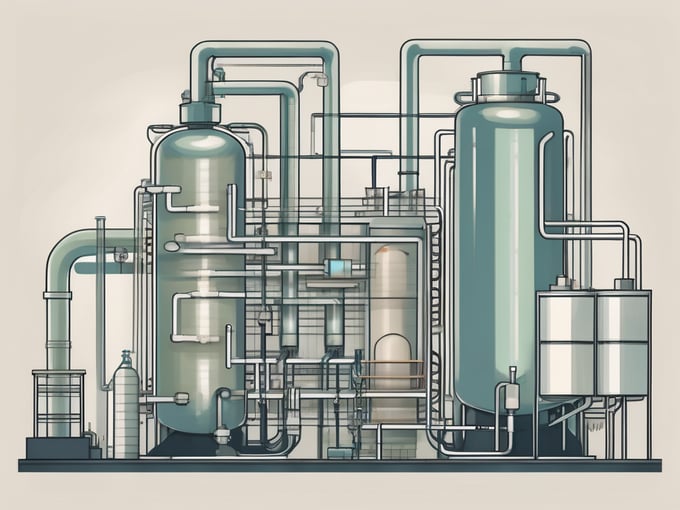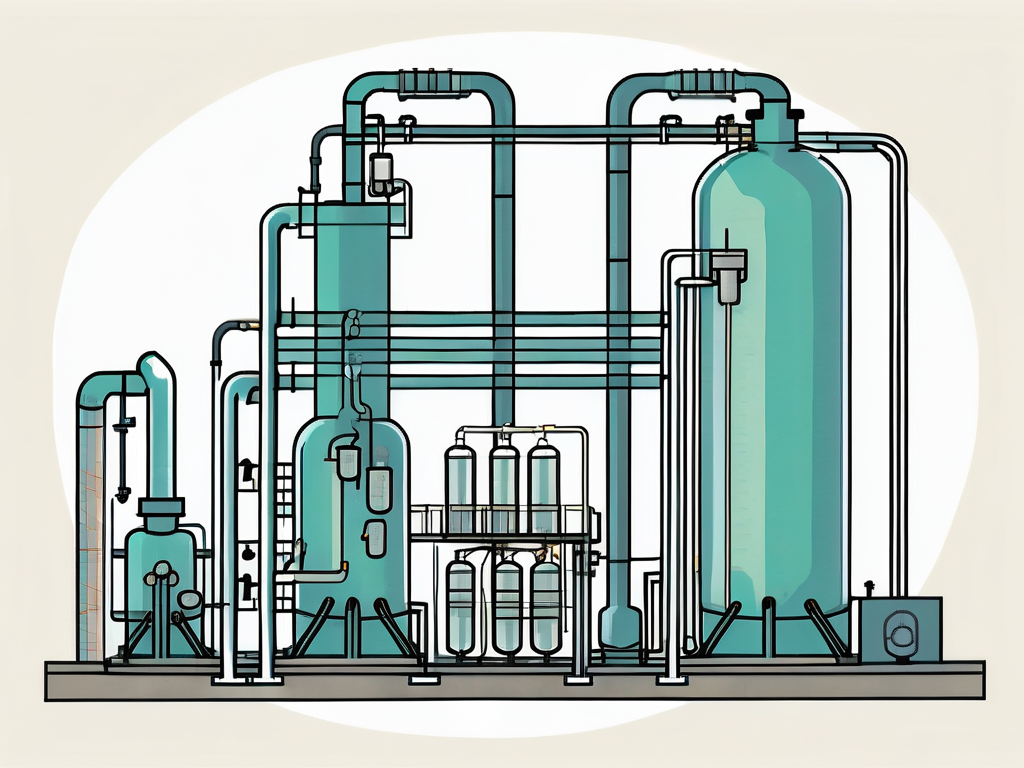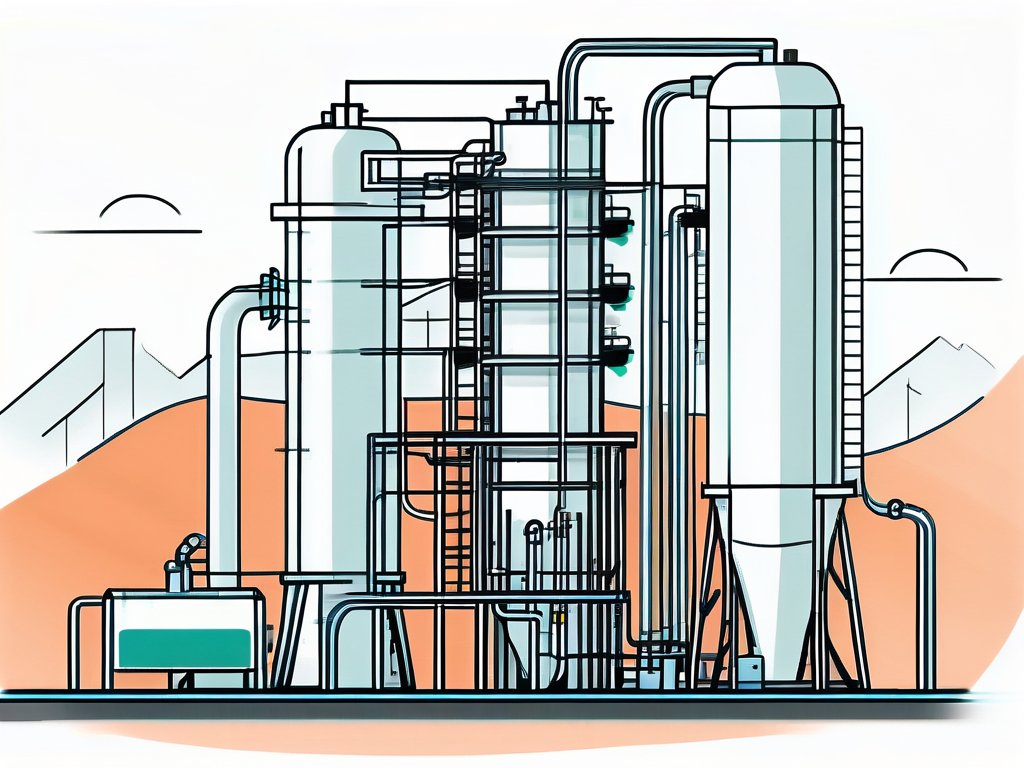
Primary Treatment: Wastewater Treatment Explained
In the world of environmental engineering, wastewater treatment is a vital process that ensures the safety and sustainability of our water resources. This process involves the removal of contaminants from wastewater to produce an effluent that can be returned to the water cycle with minimal environmental impact. This glossary article will delve into one of the crucial stages of this process: the primary treatment.
Primary treatment, also known as preliminary treatment, is the first step in the wastewater treatment process. It involves the removal of large and easily settleable solids from the wastewater stream. This stage is critical as it prepares the wastewater for subsequent treatment stages and prevents damage to equipment and facilities downstream. In this glossary entry, we will explore the various aspects of primary treatment, its importance, the processes involved, and the equipment used.
Importance of Primary Treatment
The primary treatment of wastewater is a critical step in the overall treatment process. It serves as the first line of defense against pollutants and contaminants present in the wastewater. By removing large solids and settleable particles, primary treatment reduces the load on subsequent treatment stages, enhancing their efficiency and effectiveness.
Moreover, primary treatment helps protect the treatment plant's equipment and infrastructure. Large solids and abrasive materials can cause significant damage to pumps, pipes, and other equipment downstream. By removing these materials early in the process, primary treatment helps extend the lifespan of these critical components and reduce maintenance costs.
Environmental Impact
Primary treatment also plays a crucial role in mitigating the environmental impact of wastewater discharge. By removing a significant portion of the solids, it reduces the amount of organic material that could potentially deplete oxygen levels in receiving waters, causing harm to aquatic life.
Furthermore, the solids removed during primary treatment are often further treated and used as soil amendments, contributing to resource recovery and recycling efforts. This not only reduces the need for landfilling but also helps improve soil fertility and carbon sequestration.
Processes Involved in Primary Treatment
Primary treatment involves several processes, each designed to remove specific types of contaminants from the wastewater. These processes include screening, grit removal, and sedimentation.

Screening is the first step in primary treatment. It involves the use of screens to remove large solids and debris from the wastewater. These materials can include rags, paper, plastics, and other large objects that could damage equipment or obstruct flow downstream.
Grit Removal
Following screening, the wastewater undergoes grit removal. This process involves the removal of heavy inorganic materials such as sand, gravel, and metal fragments. These materials, known as grit, can cause significant wear and tear on equipment and can also settle in pipelines and tanks, reducing their capacity and efficiency.
Grit removal is typically achieved through grit chambers, which slow down the flow of wastewater to allow the grit to settle out. The settled grit is then removed and disposed of appropriately.
Sedimentation
The final step in primary treatment is sedimentation. This process involves the settling of suspended solids in the wastewater. Sedimentation is typically achieved in primary clarifiers, large tanks that allow the wastewater to flow slowly, enabling the solids to settle at the bottom.
The settled solids, known as primary sludge, are then removed and further treated. The clarified wastewater, now free of large solids and grit, is then ready for secondary treatment.
Equipment Used in Primary Treatment
Primary treatment requires a range of equipment to effectively remove solids and grit from the wastewater. This equipment includes screens, grit chambers, and primary clarifiers.
Screens are used in the initial stage of primary treatment to remove large solids and debris. They come in various types, including bar screens, drum screens, and fine screens, each designed to remove specific sizes of solids.
Grit Chambers
Grit chambers are used to remove grit from the wastewater. They can be of various designs, including horizontal flow, aerated, and vortex grit chambers. The choice of grit chamber design depends on factors such as the characteristics of the wastewater, the flow rate, and the desired level of grit removal.
After grit removal, the wastewater is directed to primary clarifiers. These are large tanks that allow the wastewater to flow slowly, enabling the suspended solids to settle. The design and operation of primary clarifiers are critical to their performance. Factors such as the flow rate, detention time, and surface loading rate can significantly affect the efficiency of sedimentation.
Primary Clarifiers
Primary clarifiers are the final step in the primary treatment process. They are large tanks that allow the wastewater to flow slowly, enabling the suspended solids to settle. The design and operation of primary clarifiers are critical to their performance. Factors such as the flow rate, detention time, and surface loading rate can significantly affect the efficiency of sedimentation.
The settled solids, known as primary sludge, are then removed from the bottom of the clarifier using sludge rakes or scrapers. The sludge is then pumped to sludge treatment facilities for further processing.
Challenges and Limitations of Primary Treatment
While primary treatment is a crucial step in the wastewater treatment process, it is not without its challenges and limitations. One of the main challenges is the variability of the wastewater characteristics. Factors such as flow rate, temperature, and the concentration and type of solids can significantly affect the performance of primary treatment processes.
Another challenge is the handling and disposal of the solids and grit removed during primary treatment. These materials often require further treatment before they can be disposed of safely. This can add to the complexity and cost of the wastewater treatment process.
Limitations
One of the main limitations of primary treatment is that it is primarily designed to remove large solids and grit. It is not effective at removing dissolved pollutants, fine suspended solids, or biological contaminants. These contaminants require secondary and tertiary treatment for their removal.
Another limitation is the potential for the release of odorous gases during primary treatment. This can be a significant issue, particularly for treatment plants located near residential areas. Odor control measures are often required to mitigate this issue.
Future of Primary Treatment
Despite its challenges and limitations, primary treatment remains a critical component of the wastewater treatment process. However, advances in technology and a growing emphasis on resource recovery are driving changes in how primary treatment is conducted.

One such change is the adoption of advanced primary treatment technologies. These technologies aim to enhance the removal of solids and nutrients, reduce energy consumption, and facilitate the recovery of resources from the wastewater.
Advanced Primary Treatment Technologies
Advanced primary treatment technologies include processes such as chemically enhanced primary treatment (CEPT), ballasted flocculation, and dissolved air flotation (DAF). These processes enhance the removal of solids and nutrients, reduce energy consumption, and facilitate the recovery of resources from the wastewater.
For example, CEPT involves the addition of chemicals to the wastewater to enhance the coagulation and flocculation of solids, improving their removal during sedimentation. Ballasted flocculation involves the addition of a ballasting agent to the wastewater to increase the settling velocity of the solids, enabling their rapid removal.
Resource Recovery
Another trend in primary treatment is the focus on resource recovery. This involves the extraction of valuable resources from the wastewater, such as energy, nutrients, and water for reuse. This not only reduces the environmental impact of wastewater discharge but also provides economic benefits.
For example, the solids removed during primary treatment can be anaerobically digested to produce biogas, a renewable source of energy. The nutrients in the wastewater, such as nitrogen and phosphorus, can be recovered and used as fertilizers. The water itself can be treated and reused for non-potable applications, reducing the demand for fresh water.
Conclusion
Primary treatment is a critical step in the wastewater treatment process. It serves as the first line of defense against pollutants and contaminants, protecting equipment and infrastructure, and reducing the load on subsequent treatment stages. Despite its challenges and limitations, primary treatment continues to evolve, with advances in technology and a growing emphasis on resource recovery driving changes in how it is conducted.
As our understanding of wastewater treatment continues to grow, so too will our ability to effectively and sustainably manage this vital resource. Whether through the adoption of advanced primary treatment technologies or the extraction of valuable resources from wastewater, the future of primary treatment promises to be as dynamic and essential as its past.



